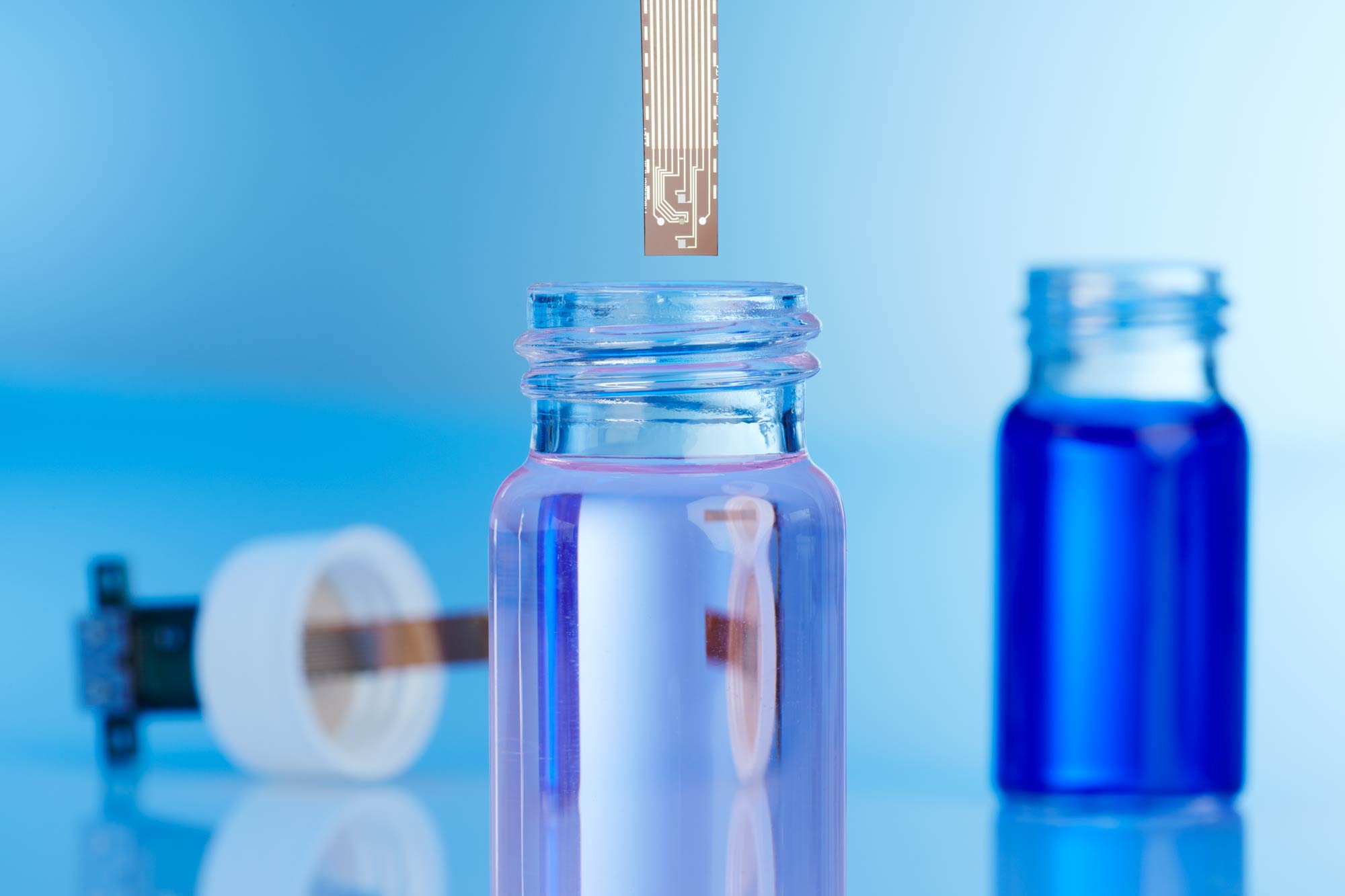Fraunhofer IPM has been developing various sensors for the characterization of liquids for more than 15 years. Depending on the analysis target, chemical as well as physical parameters can be determined. As a typical result, mixing ratios of different liquid components may be derived. The following measuring techniques for liquid analysis are available:
Sensors for liquid analysis
Electrical impedance spectroscopy
Fraunhofer IPM is currently developing innovative sensor concepts based on combined electrical and thermal impedance spectroscopy. Impedance measurement can be used to determine the thermal characteristics of a liquid. Such characteristics are directly linked to other characteristics, such as viscosity. Combining several thermal measurement structures also makes it possible to measure flow rate and direction. Impedance spectroscopy can be used to measure the aging of oils as well as sooting and other processes in chemical reactors.
Thermal impedance spectroscopy (3Omega Method)
Fraunhofer IPM develops robust and temperature-stable sensor technology in microsystems technology for measurements at temperatures up to 250 °C. This technology is suitable for industrial applications. High-performance online diagnostic systems detect unwanted contaminations or films on surfaces in chemical plants and reactors, known as »fouling«, at an early stage. These measurements are based on the »3Omega method«, which has not been applied in this context before. The »3Omega method« is based on the interpretation of a thermal signal and enables the determination of other temperature dependent process parameters such as heat flow, density, thermal conductivity and capacity. The »3Omega method« turns out to be a highly powerful tool for process monitoring. Currently, the method is tested in chemical, pharmaceutical and biotechnological applications. Due to the universal suitability of the method, future applications in the cosmetics and food industry, for example in pasteurization and HTST (»High Temperature Short Time«) plants, are also conceivable.
ATR (attenuated total reflection) spectroscopy
For more than 20 years, Fraunhofer IPM has been developing sensors and measurement systems for process applications based on attenuated total reflection (ATR) in the mid-infrared. Data of the chemical composition of liquids is provided on- or at-line, thus enabling direct process control → learn more about ATR spectroscopy at Fraunhofer IPM
Raman spectroscopy
Raman spectrometers provide characteristic »fingerprints« of liquids which allows to distinguish between very similar molecule structures. Raman spectroscopy offers some significant advantages when compared to conventional vibrational spectroscopy like infrared absorption spectroscopy. This is why Fraunhofer IPM increasingly counts on Raman spectroscopy for liquid analysis. Using robust Raman spectrometers suitable for industrial application. → learn more about Raman spectroscopy at Fraunhofer IPM
